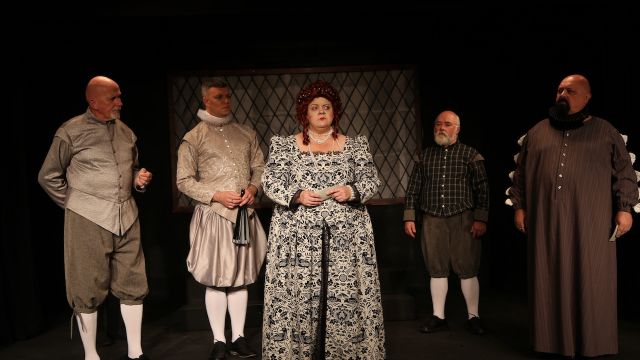Mary Stuart
Friedrich Schiller’s play Mary Stuart was first performed in 1800. Set in 1586, it tells of a plot to assassinate Elizabeth I of England instigated by her cousin Mary Stuart, deposed Queen of Scotland, who claimed the right to the English throne.
Both were strong women who had the following of loyal supporters, but Elizabeth, as the crowned Queen, had the upper hand, and kept Mary in prison in England for 19 years. The plot, carried out by Mary’s Catholic followers, was unsuccessful and led, eventually to Mary’s execution.
Australian playwright Kate Mulvany’s adaptation of Schiller’s play emphasises the inner strength and intelligence of these two women, sustaining control in a world dominated by men and religion and ambition. She makes them clever and determined. She gives Elizabeth wit and guile. She gives Mary faith and conviction.
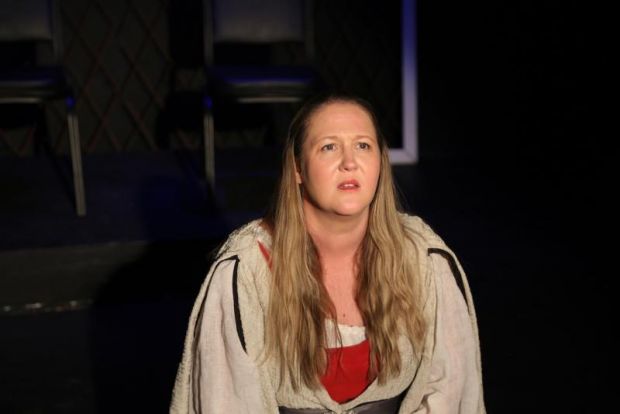
Not often does a community theatre company take on a historical drama such as this, where costumes, staging, customs and language are as important as the characters and their story. And when that story has been retold by a playwright like Mulvany, one knows that there will be little quirks and twists that look at the events through a contemporary lens.
Director Heather McGreal has taken care to give this play its historical setting as well as Mulvany’s insight into the characters. The set is austere but the costumes, designed by Barbara Vasilescu, McGreal herself and Jake Martin, take the characters back into the 16th century where brocades, wide skirts, ruffed collars, knee-breeches, white stockings and restrained colours were de rigueur. Mark Prophet’s lighting suggests either the gloom of Mary’s dull cell in Fotheringhay Castle or Elizabeth’s brighter court in London, and sound designer Nicole Madden uses selections of music that echoes the sombreness of the story.
McGreal’s blocking accentuates the class divisions of the time and the characters’ perceptions of their social standing. This makes the small stage seem larger, the perspective of distance more evident.
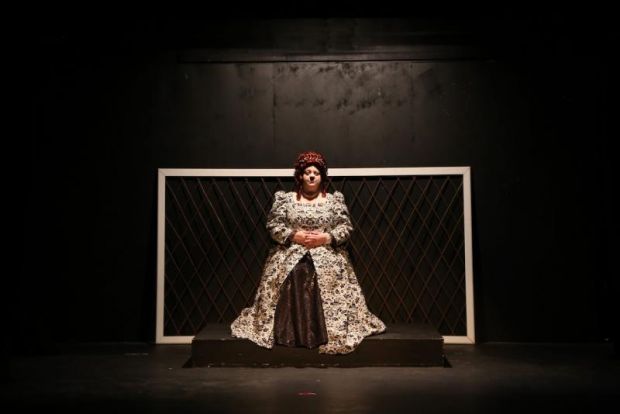
The two queens are played astutely by Rebecca Fletcher and Nicole Smith.
Fletcher is the devout Mary, incarcerated, but dignified, buoyed by the kindness of her ‘keeper’ Paulet, her loyal followers and their optimism. Fletcher holds Mary’s head high, her poise evident in rigid posture and tight composure. When she speaks, she does so quietly, thoughtfully, her gaze often seeming to take her beyond the walls of her prison. Even as she faces the executioner, Fletcher’s Mary is quietly contained.
Niccole Smith as Elizabeth takes full advantage of the wit and cynicism that Mulvany has written into the Virgin Queen. In gold brocade, black lace and beaded red wig, Smith makes Elizabeth regal yet accessible, and though susceptible to flattery, determined to hold the singularity of her position. She shows the different dimensions of the shrewd Elizabeth Mulvany has created with characteristic gestures and quizzical expressions. She’s a little cheeky, a little suggestive, cynical, wily … but also a little lonely.
There are no ladies-in-waiting in this court. Only men who hover in waiting.
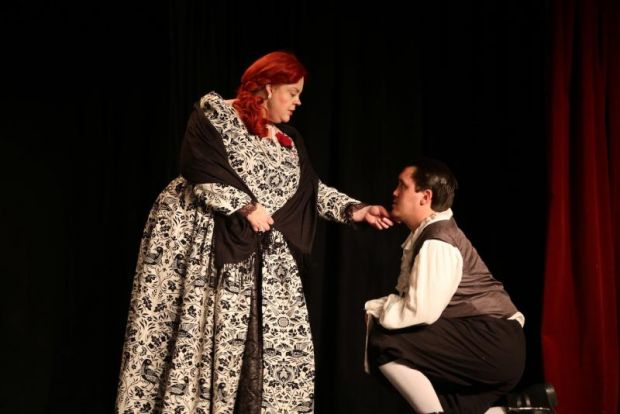
In Mary’s castle prison Amias Paulet is played by Mark Prophet. Employed to guard Mary, he has become her friend and protector and Prophet shows that in his steadfast service and his anguish when she is condemned to death. His nephew, Mortimer, played by Gabriel Pope, shows a different sort of loyalty, that of scheming conspirator and failed assassin.
Anthony Brown plays Lord Burleigh who was the chief adviser to Elizabeth I for most of her reign. Brown makes Burleigh very loud and angry, giving him a strong stage presence that almost dominates some scenes, providing a telling contrast to the more refined Lord Shrewsbury played with quiet conviction and gentle civility by Aurel Vasilescu.
Robert Dudley, Earl of Leicester, stateman, landowner, man-about-town is played by Anthony Ashdown who gives Dudley all the fashionable panache and sycophantic charm that has made him the Queen’s favourite.
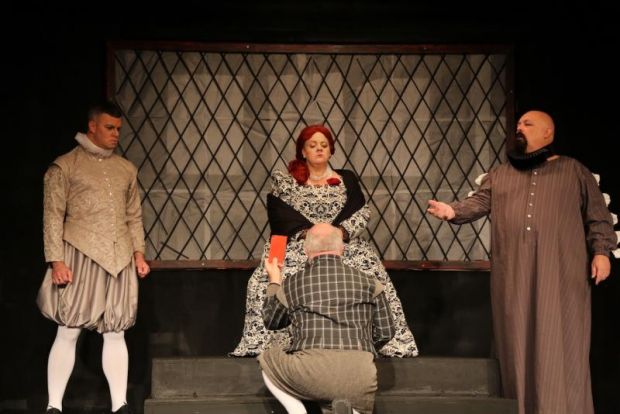
Elizabeth’s gives the responsibility of holding the warrant for Mary’s execution to her undersecretary, William Davison played by Rhys Ward who shows the awful burden of this task, especially when Burleigh hovers over him screaming to hand over the document..
Visiting the court with a marriage proposal from the French king is diplomat Guillaume de l'Aubespine. Angela Pezzano makes l'Aubespine persistent but polite, following Elizabeth in a gallant effort to gain her consent.
There are two non-speaking parts in this production. Firstly, there is ‘Girl’ played by youngster Aimee Baker-Smith. Whether assisting Elizabeth or Mary or carefully moving props, or watching the action as she mops the floor, Baker-Smith is an integral part of the action and takes her role very seriously.
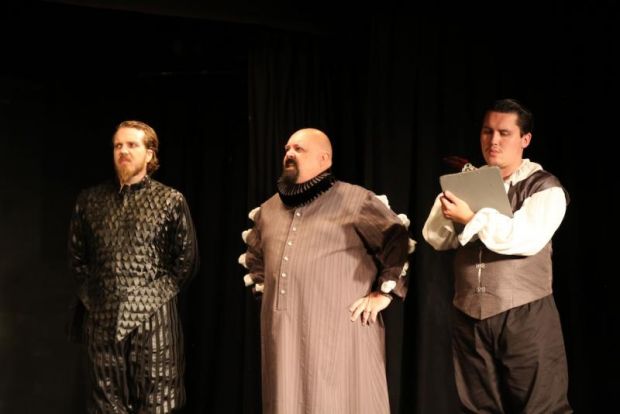
Then there is ‘Dog’ who is Mary’s constant companion. “Teddy” Prophet plays this role with canine aplomb, and despite his well-behaved acting unknowingly steals the focus in each of his scenes!
Mary Stuart and Elizabeth I never actually met, but Kate Mulvany introduced a scene where they meet at a costume party. Some of the dialogue in this scene is taken from the letters the cousins wrote to each other. The rest of that conversation Mulvany has imagined creatively!
Heather McGreal has directed this production with an eye to detail. The characterisations are strong. She has ensured the wittiness and contemporary language in Mulvany’s script is clearly expressed, and though this sometimes leads to a lack of pace, that does not take away from the potential of this production. Bravo HLT!
Carol Wimmer
Subscribe to our E-Newsletter, buy our latest print edition or find a Performing Arts book at Book Nook.

